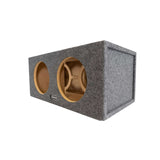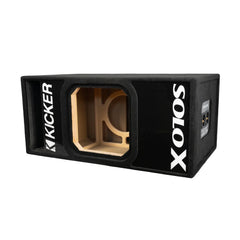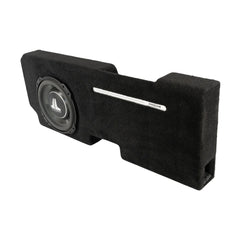The Ultimate Guide to Choosing the Best Sub Box
Key Highlights
- Digital Signal Processing (DSP) is a technique used to improve the accuracy and reliability of digital communications.
- DSP involves multiple mathematical operations such as compression, decompression, filtering, equalization, modulation, and demodulation to generate a signal of superior quality.
- DSP is used in communications systems, audio and speech processing, sonar and radar systems, sensor arrays, image enhancement, telecommunications, system controls, and even the biomedical field.
- DSP offers various benefits, including audience targeting capabilities, brand safety, and fraud prevention tools, a real-time view of campaign performance, optimizations, and flexible budget shifting.
- Choosing the suitable DSP depends on the data type needed, the number of ad exchanges the DSP is plugged into, cost, training and support, and ease of use.
Introduction
Welcome to the ultimate guide to choosing the best sub box for your audio system. Whether you're an audio enthusiast or simply looking to upgrade your car or home audio, selecting the right subwoofer enclosure can make a difference in your listening experience. In this comprehensive guide, we'll explore the different types of sub boxes available, the key considerations when selecting one, installation tips, and how to maximize their performance. We'll also dive into some real-world applications and success stories and review some of the top sub boxes on the market. So let's start and take your audio system to the next level with the perfect sub box.
Exploring the Best Sub Boxes for Unmatched Audio Experience
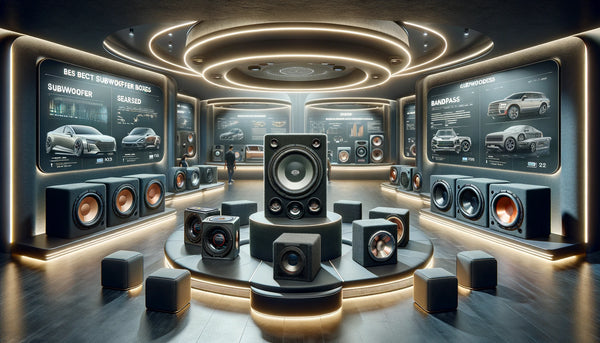
When achieving an unmatched audio experience, the subwoofer enclosure plays a crucial role. It not only enhances the sound quality but also protects the subwoofer. There are different types of sub boxes available, each offering its advantages. From sealed boxes for deep, accurate bass to ported boxes for powerful bass impact and bandpass boxes for maximum bass efficiency to vehicle-specific and free-air boxes for custom, fits, and flexible installations, there is a sub-box for every requirement. Choosing the correct sub box can provide powerful and accurate bass, taking your audio experience to a new level.
1. Sealed Sub Boxes for Deep, Accurate Bass
When it comes to achieving deep, accurate bass, sealed sub boxes are the way to go. These subwoofer enclosures are designed to provide tight and controlled bass, making them ideal for those who value precise bass reproduction.
Some key advantages of sealed sub boxes include:
- Excellent bass response: Sealed enclosures offer a controlled environment for the subwoofer to produce accurate and well-defined bass.
- Improved sound quality: Sealing boxes prevent sound waves from canceling each other, eliminating muddiness and distortion, resulting in a cleaner and more detailed sound.
- Accurate bass reproduction: The sealed design of the box limits cone movement, resulting in tighter and more responsive bass.
- Versatile placement options: Sealed sub boxes are relatively compact, making them suitable for small to medium-sized spaces and various car audio systems.
Overall, sealed sub boxes are an excellent choice for those seeking deep, accurate bass and enhanced sound quality in their audio system. With their precise bass reproduction and compact design, they can provide an immersive audio experience in any environment—more information on becoming a sealed Box expert.
2. Ported Sub Boxes for Powerful Bass Impact
Ported sub boxes are the way to go if you want powerful bass impact. These called bass reflex enclosures are designed to produce deeper and more resonant bass than sealed boxes. Here are some key advantages of using ported sub boxes:
- Enhanced bass performance: Ported enclosures allow the subwoofer to move more air, resulting in louder and more impactful bass.
- Powerful bass output: The ported design improves the system's overall efficiency, allowing for greater bass output with less strain on the amplifier.
- Efficient airflow: The port in the enclosure allows for the efficient movement of air, which helps to reduce distortion and improve overall sound quality.
- Versatile sound reproduction: Ported sub boxes are suitable for a wide range of music genres, making them a popular choice among audio enthusiasts.
It's important to note that ported sub boxes generally require more space than sealed boxes, so they may not be suitable for all vehicles. However, a ported sub-box is worth considering if you want powerful bass impact and enhanced sound performance. Click Here to become a master at ported enclosures.
3. Bandpass Sub Boxes for Maximum Bass Efficiency
For maximum bass efficiency, bandpass sub boxes are the way to go. These enclosures are designed to provide maximum output by using a combination of both sealed and ported chambers. Here are some key advantages of using bandpass sub boxes:
- Increased bass response: Bandpass enclosures produce strong bass response across a wide frequency range.
- Enhanced subwoofer box design: Bandpass enclosures' unique design efficiently transfers sound waves from the sealed chamber to the ported chamber, resulting in increased bass output.
- Maximum bass efficiency: Bandpass enclosures are designed to maximize the subwoofer's efficiency, allowing it to produce louder and more impactful bass with less power.
- Customizable sound reproduction: Bandpass enclosures offer a wide range of customization options, allowing you to tune the box to your specific preferences and desired sound qualities.
It's important to note that bandpass sub boxes can be more complex to design and require careful tuning to achieve optimal performance. However, a bandpass sub box is worth considering if you're looking for maximum bass efficiency and powerful sound reproduction. More detailed info can be found here.
4. Vehicle-Specific Sub Boxes for Custom Fits
When installing a subwoofer in your vehicle, one of the key considerations is finding a sub box that fits perfectly into the available space. This is where vehicle-specific sub boxes come into play. Here are some advantages of using vehicle-specific sub boxes:
- Custom fit: Vehicle-specific sub boxes are designed to fit perfectly into specific makes and models of vehicles, ensuring a seamless integration and a clean, professional look.
- Optimal use of available space: These sub boxes are designed to make the most of your vehicle's available space, allowing maximum bass performance without compromising interior space.
- Easy installation: Vehicle-specific sub boxes are designed to be easy to install, often requiring no modifications to your vehicle. They typically come with all the necessary mounting hardware and wiring, making the installation hassle-free.
- Enhanced sound quality: Vehicle-specific sub boxes can enhance the overall sound quality of your car audio system by providing a custom fit and maximizing the available space, providing a more immersive listening experience.
A vehicle-specific sub-box is an excellent option if you're looking for a sub-box that fits perfectly into your vehicle and optimizes the available space. Read more here.
5. Free-Air Sub Boxes for Flexible Installations
Free-air sub-boxes are an excellent option for flexibility in their subwoofer installation. These enclosures are designed to be mounted directly onto a rear deck or other open space in your vehicle, eliminating the need for a traditional box. Here are some advantages of using free-air sub boxes:
- Flexible installation options: Free-air sub-boxes can be mounted in various locations in your vehicle, providing flexibility.
- Optimal performance: These enclosures are designed to work with your vehicle's natural acoustics, providing optimal performance without needing a traditional box.
- Integration with car speakers: Free-air sub-boxes can be integrated with your existing car speakers, providing a seamless audio experience and ensuring that all components of your car audio system work harmoniously.
- Space-saving design: By eliminating the need for a traditional box, free-air sub boxes help save space in your vehicle, allowing you to maximize the available interior space.
It's important to note that free-air sub boxes require a solid mounting surface and may not be suitable for all vehicles. However, a free-air sub box is a great option if you're looking for flexibility in your subwoofer installation and space-saving design.
Key Considerations When Selecting a Sub Box
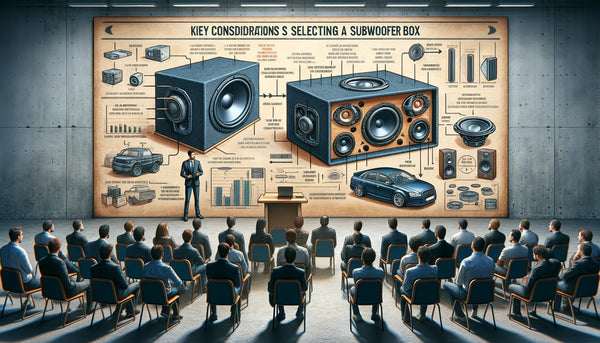
When selecting a sub box, there are several key considerations to remember. First and foremost, you need to consider the size and compatibility of the subwoofer box with your subwoofer and car audio system. It's also important to consider the power handling capabilities of the sub box, as well as the overall listening experience and the different types of subwoofer boxes available. By considering these factors, you can ensure that you choose the right sub-box that meets your specific needs and preferences.
Understanding Subwoofer Size and Compatibility
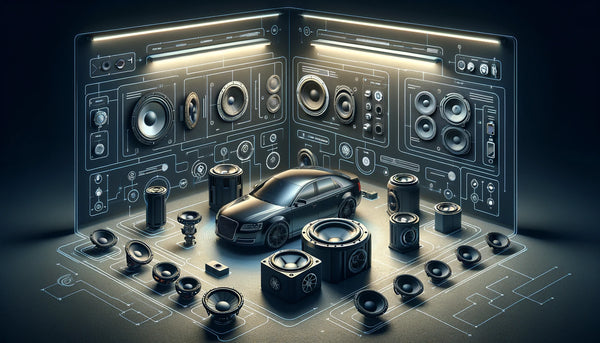
When selecting a subwoofer box, one of the key considerations is the size and compatibility of the subwoofer. The size of the subwoofer can significantly impact the performance and output of the bass. Choosing a subwoofer box compatible with your subwoofer's size and specifications is essential. Additionally, considering factors such as the car audio experience you want to achieve and whether you have a dual voice coil subwoofer can also play a role in selecting the correct subwoofer box. By choosing a subwoofer box that is the right size and compatible with your subwoofer, you can ensure optimal bass performance and a satisfying audio experience.
The Significance of Box Volume and Tuning
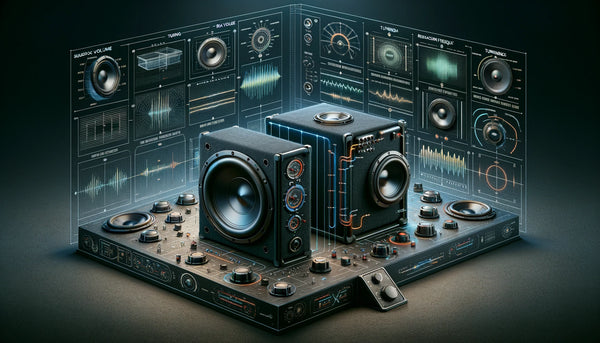
Box volume and tuning are crucial factors when selecting a subwoofer box. The box's volume is measured in cubic feet and determines the air space available for the subwoofer to work with. The box size can significantly affect the sound quality and bass response. Additionally, the box tuning refers to the frequency at which the box resonates. The type of box, whether it's sealed, ported, or bandpass, will also affect the tuning and overall sound output. Choosing a box with the right volume and tuning is essential to ensure optimal bass performance and sound quality. Considering these factors, you can select a subwoofer box perfectly suited to your audio system and preferences.
Material Quality and Durability of Sub Boxes
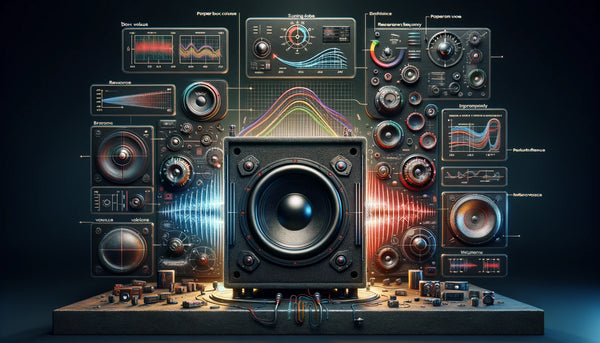
The material quality and durability of sub boxes are essential factors when selecting a subwoofer enclosure. The sub box must be constructed from high-quality materials that ensure structural integrity and longevity. Medium-density fiberboard (MDF) is a commonly used material for subwoofer boxes due to its strength, durability, and ability to resist vibration. It's essential to choose a sub box made from high-quality materials to ensure it can withstand the demands of the audio system and provide long-lasting performance. By selecting a sub box with good material quality and durability, you can ensure that it will provide optimal bass performance and protection for your subwoofer.
Design Features for Enhanced Sound Quality
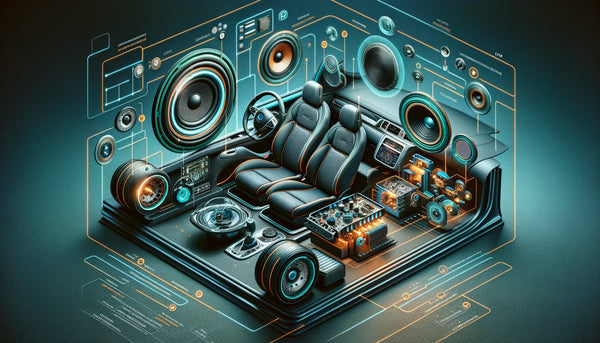
Design features can greatly impact a subwoofer box's sound quality and performance. Some features to consider include precision construction, which ensures the box is free from leaks and vibrations affecting sound quality. Another critical design feature is a compact design, which allows the subwoofer box to fit into tight spaces without sacrificing bass performance. It's also important to consider design features that enhance sound quality, such as internal bracing for added stability and reduced resonance. Selecting a subwoofer box with the right design features ensures optimal sound quality and performance for your audio system.
Enhancing Your Audio System: Installation Tips

Installing a subwoofer box can greatly enhance your audio system's sound quality and performance. Here are some installation tips to consider:
- Choose the right location: Select a location in your vehicle that allows for optimal sound dispersion and easy access for adjustments and maintenance.
- Use proper wiring: Connect the correct gauge securely to the subwoofer box and amplifier.
- Seal all connections: Seal all with high-quality adhesive or silicone to prevent air leaks and ensure optimal sound quality.
- Fine-tune the system: Once the subwoofer box is installed, fine-tune the audio system to achieve the desired sound quality and bass performance.
By following these installation tips, you can ensure that your subwoofer box is installed correctly and that you achieve the best possible sound quality from your audio system.
Tools and Materials You'll Need
When installing a subwoofer box, there are certain tools and materials that you'll need to have on hand. Some of the tools you'll need include:
- Screwdriver set: A set of screwdrivers is needed to remove panels and secure the subwoofer box in place.
- Wire cutters/strippers: These tools will be needed to cut and strip the wiring for connecting the subwoofer box to the amplifier.
- Drill and drill bits: If you need to create mounting holes for the subwoofer box, a drill and appropriate drill bits will be necessary.
- Level: A level will help ensure the subwoofer box is appropriately aligned and mounted.
- Materials you'll need include:
- Adhesive or glue: High-quality adhesive or glue will be necessary for sealing connections and preventing air leaks.
- Wiring: You'll need wiring to connect the subwoofer box to the amplifier and audio system.
- Mounting hardware: Depending on the installation location, you may need mounting hardware such as brackets or screws.
With these tools and materials, you'll be prepared for a smooth and successful subwoofer box installation.
Common Installation Mistakes to Avoid
When installing a subwoofer box, there are some common mistakes that you should avoid to ensure optimal performance and sound quality. Here are a few mistakes to watch out for:
- Poor sealing: Failing to seal connections and openings properly can lead to air leaks, negatively impacting bass accuracy and performance. Use high-quality adhesive or glue to seal all connections and openings.
- Lack of bracing: Not including internal bracing in the subwoofer box can lead to unwanted resonance and vibrations, resulting in poor sound quality. Adding internal bracing can help improve structural integrity and reduce resonance.
- Improper mounting: Mounting the subwoofer box in a location that is not secure or unsuitable for optimal sound dispersion can affect overall performance. Choose a location that allows for secure mounting and optimal sound dispersion.
- Incorrect wiring: Failing to use the correct gauge of wiring or improperly connecting the wiring can result in poor sound quality and even damage to the subwoofer or amplifier. Ensure to use the correct gauge of wiring and securely connect all wiring.
- Overpowering the subwoofer: Using an amplifier that is too powerful for the subwoofer can lead to distortion and potential damage. Match the subwoofer's power handling capabilities to the amplifier for optimal performance.
By avoiding these common installation mistakes, you can ensure that your subwoofer box is installed correctly and that you achieve the best possible sound quality and bass performance.
Maximizing Sub Box Performance
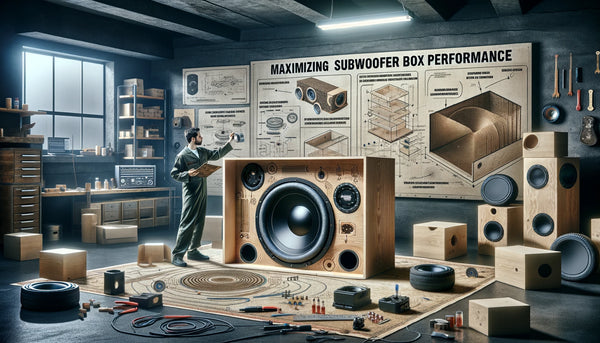
To maximize the performance of your sub box and achieve the best sound quality and bass response, there are a few key factors to consider. These include:
- Fine-tuning: Take the time to fine-tune your sub box and audio system to achieve the desired sound quality and bass performance.
- Acoustic treatment: Consider adding acoustic treatments to your vehicle or listening space to minimize unwanted reflections and improve overall sound quality.
- Placement: Experiment with different placements of the sub box within your vehicle to find the optimal position for sound dispersion and bass response.
- Room correction: Use software or hardware to enhance your sub box's sound quality and bass response.
By paying attention to these factors and optimizing your subbox and audio system, you can maximize performance and achieve a truly immersive audio experience.
Fine-Tuning Your Sub Box for Optimal Sound
Fine-tuning your sub box is a crucial step in achieving optimal sound quality. Here are some tips for fine-tuning your sub box:
- Crossover: Adjust the crossover frequency of your subwoofer to blend seamlessly with your main speakers. This will ensure a smooth transition between frequencies and avoid gaps or overlaps.
- Phase adjustment: Experiment with your subwoofer's phase adjustment to achieve the best overall sound. This will help integrate the subwoofer with the rest of your audio system.
- EQ settings: Use equalization (EQ) settings to adjust your subwoofer's frequency response. This can help to compensate for any room acoustics and achieve a more balanced sound.
- Positioning: Experiment with your subwoofer's placement within your room to find the best placement for optimal sound quality. Moving the subwoofer around can help minimize room resonances and achieve better bass response.
You can achieve optimal sound quality with improved high frequencies, clarity, and overall audio performance by fine-tuning your sub box.
Accessories to Improve Sub Box Efficiency
Several accessories available can help improve your sub box's efficiency and enhance your overall audio experience. Here are a few accessories to consider:
- Amplifier: A high-quality amplifier that matches your subwoofer's power handling capabilities can significantly improve your sub box's efficiency and performance.
- Sound-deadening material: Applying sound-deadening material to your vehicle's interior can help reduce vibrations and improve overall sound quality.
- Bass boost controller: A bass boost controller allows you to adjust the bass output of your sub box, giving you more control over the sound and allowing you to customize the audio experience to your liking.
- Remote control: A remote control for your sub box allows you to adjust the volume and other settings without having to access the sub box manually, providing added convenience and ease of use.
By incorporating these accessories into your audio system, you can maximize the efficiency of your sub box and enhance your overall audio experience.
Top Picks: The Best Sub Boxes on the Market
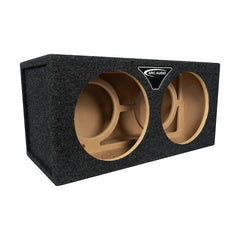
Several top picks are available when choosing the best sub box for your audio system. These subwoofer enclosures offer exceptional sound quality and performance. Some of the best sub boxes on the market include:
- Proline X Performance P12D-P Ported Enclosure - Best Overal build quality and performance
- QPower QBASS Dual Vented 12 Inch Subwoofer Box - Affordable entry-level
- American Sound Connection 212VH 12 Inch Dual Subwoofer Box - Popular Budget Box
These subwoofer boxes have gained popularity for their superior design, build quality, and compatibility with various audio systems. Choosing one of these top picks delivers exceptional bass response and sound quality.
Review of Top Sealed Sub Boxes
When it comes to sealed sub boxes, there are several top options to consider. These subwoofer enclosures are designed to provide tight and controlled bass, making them ideal for those who value precise bass reproduction.
Some top-sealed sub-boxes include:
Proline X Performance Sealed Enclosure for 10" Subwoofers: The Premium Choice
Atrend BBox E10D Dual 10-Inch Subwoofer Box: Affordable Imported Enclosure
American Sound Connection 115VH 15 Inch Single Subwoofer Box: Bass on a Budget
These sealed sub boxes are popular for their superior build quality, compact design, and excellent bass response. Choosing one of these top sealed sub-boxes ensures that your audio system delivers accurate and well-defined bass that enhances your listening experience.
Best Sub Box model to build?
The best sub box model to build for sound systems is a ported subwoofer box. Ported boxes are more efficient in producing louder, deeper bass compared to sealed enclosures. They are ideal for creating an impactful audio experience with enhanced low-frequency response and overall sound quality.
Conclusion
Understanding the nuances can make a significant difference when selecting the best sub-box for your audio system. Whether you prefer sealed for precise bass, ported for impactful beats, or bandpass for maximum efficiency, each type has advantages. Consider factors like subwoofer size, box volume, and material quality to enhance sound quality. By fine-tuning your sub box and avoiding common installation mistakes, you can maximize its performance. Real-world success stories showcase the transformative power of sub boxes in various setups. Explore our top picks to elevate your audio experience. Make an informed decision and enjoy unparalleled sound quality tailored to your preferences.
Frequently Asked Questions

What Are the Advantages of a Ported Sub Box Over a Sealed One?
Ported sub boxes offer several advantages over sealed ones. They provide greater bass output, more dynamic sound, and better efficiency. The ported design allows for greater airflow, increasing bass response and impact. However, ported sub boxes require more space and careful tuning to achieve optimal performance. Sealed Vs. Ported, the ongoing debate.
How Do I Determine the Right Size Sub Box for My Vehicle?
To determine the right size sub box for your vehicle, you need to consider the available space in your vehicle and the specifications of your subwoofer. Measure the dimensions of the space where you plan to install the sub box and choose a box that fits comfortably while allowing for proper airflow and amplifier installation.
Can I Build My Sub Box, and How?
You can build your sub box with the right materials and instructions. To build a sub box, you will need the following: MDF (medium-density fiberboard), wood glue, screws, a circular saw or jigsaw, a drill, and a subwoofer box design plan. Cut the MDF to the required dimensions based on the design plan. Then, assemble the pieces using wood glue and screws. Seal gaps or joints with caulk or wood glue to prevent air leaks. Finally, sand the edges and surfaces of the sub box for a smooth finish. Building your sub box allows you to customize it to your needs and preferences.
What's the Best Way to Maintain and Clean My Sub Box?
To maintain and clean your sub box, following a few simple steps is essential. Regularly inspect the sub box for any signs of damage or wear. Clean the exterior of the sub box with a soft cloth and mild soap, avoiding abrasive cleaners that could damage the finish. Use a vacuum or compressed air for the interior to remove any dust or debris. Avoid using liquid cleaners on the interior to prevent damage to the subwoofer or wiring. Additionally, be careful when handling the sub box to prevent accidental drops or impacts that could compromise its durability. You can ensure its longevity and optimal performance by properly caring for your sub box.


